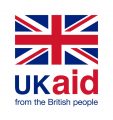Chapter 3: Case studies on Benin and Tanzania
DownloadThere are several reasons why Benin is an interesting country to study, and some of them have no doubt contributed to making it an aid darling for many donors. First, although it is made up of an extraordinarily varied mosaic of peoples and ethnic groups, this does not seem to have created serious problems as in certain other parts of sub-Saharan Africa. Second, it is a place with a long legacy of all sorts of political entities, running from old kingdoms or empires to principalities and microstates (possibly born of the breaking up of kingdoms or empires), which have also coexisted with stateless areas dominated by nonhierarchised families and clans. Because over the last 10 centuries the country has been the locus of numerous waves of migration from neighbouring countries, it is a multi-national state with strong links to its neighbours, and has porous and flexible borders considered from the
standpoint of human settlement. Relatedly, with its direct access to the sea in its southern part, Benin has long been a nexus of trade networks and routes actively engaged in regional and even external commerce. These seem to be ideal conditions for long-term development based on an open (small) market economy. Third, although it was subject to a long-enduring Marxist-Leninist military regime under Lieutenant-Colonel Mathieu Kérékou (1972–1990), Benin has proven able to transition to democracy peacefully and then to enjoy political stability through a long period of regular democratic elections. Fourth, being deprived of mineral and non-mineral resources, the country is apparently in a position to eschew the resource curse that has impaired growth and development in many African countries endowed with abundant such resources.
Tanzania is home to some 60 million people. Given its size, it is sparsely populated. However, as in most African countries, its population is growing very quickly and will reach 100 million before 2040. Because of the pace of demographic growth, the fast increase in the degree of urbanisation has not prevented the population density doubling in rural areas over the last 30 years, making land progressively less abundant. Overall, the country enjoys a high agricultural potential, which is presently far from being fully exploited. Only 30% of the land suitable for cultivation is being farmed, often under harsh conditions, despite numerous rivers and lakes, which offer a huge potential for irrigated agriculture. Other natural resources include minerals like gold, some other metals, and gemstones, and fuels (essentially coal and gas), of which abundant reserves have recently been discovered offshore. Another natural resource is the beauty of the country’s mountainous, sea, and savannah landscapes, as well as its world-famous reserves of wild animals, which altogether attract a considerable flow of tourists.




